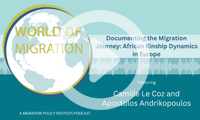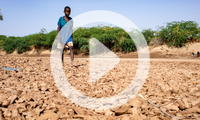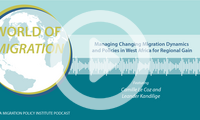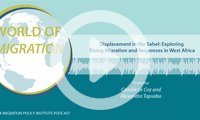Africa (sub-Saharan)
Recent Activity

This webinar examines the challenges that refugees and other migrants face in—and place on—secondary cities, municipal capacity to respond to needs, the types of support required at national and other levels, and how development actors can better partner with secondary cities and local actors.

African migrants turn to the strength of kinship-based support systems in pursuit of stability as they settle in a European landscape that is sometimes made precarious by their legal status and shifting policies. This episode discusses use of the kinship networks, including to exchange or broker identity documents between migrants along the migration journey and at destination.

During this MPI webinar, climate experts and regional authorities outline the challenges related to climate change and human mobility that local communities, national governments, and the IGAD region are confronting.

MPI Europe Associate Director Camille Le Coz discusses migration dynamics in West Africa and and how African leaders are responding to these trends with Leander Kandilige, a senior lecturer at the Centre for Migration Studies at the University of Ghana.

MPI Europe Associate Director Camille Le Coz discusses rising displacement in the Sahel, which is experiencing multiple crises, with development economist Alexandra Tapsoba.





















The UK-Rwanda Agreement Represents Another Blow to Territorial Asylum
Lessons from Europe: The U.S. Opportunity to Rethink the Links Between Development Assistance and Migration
The Lampedusa Tragedy Prompts the Question: Does the UN Have Any Impact on the World’s Migrants?